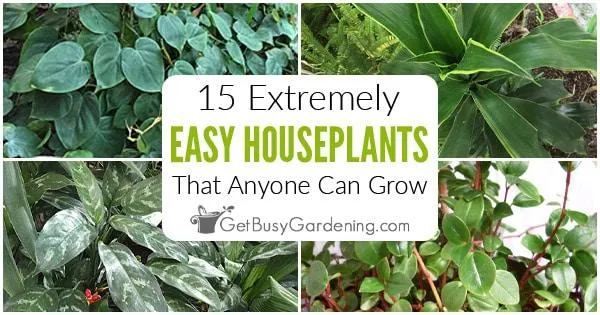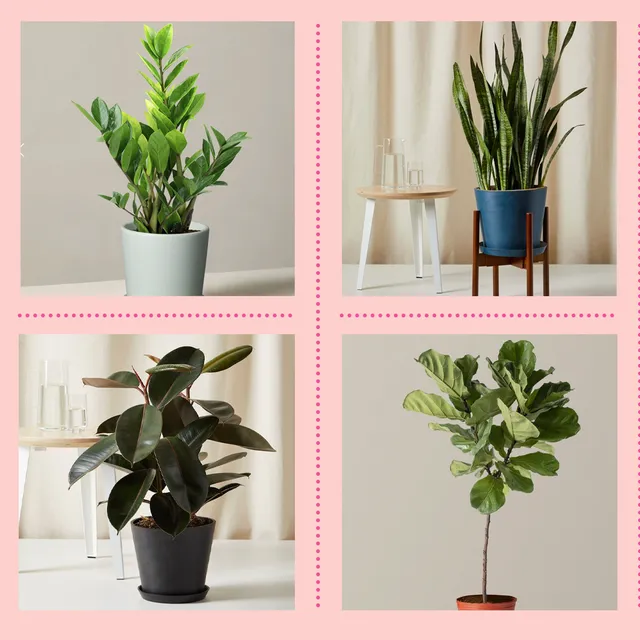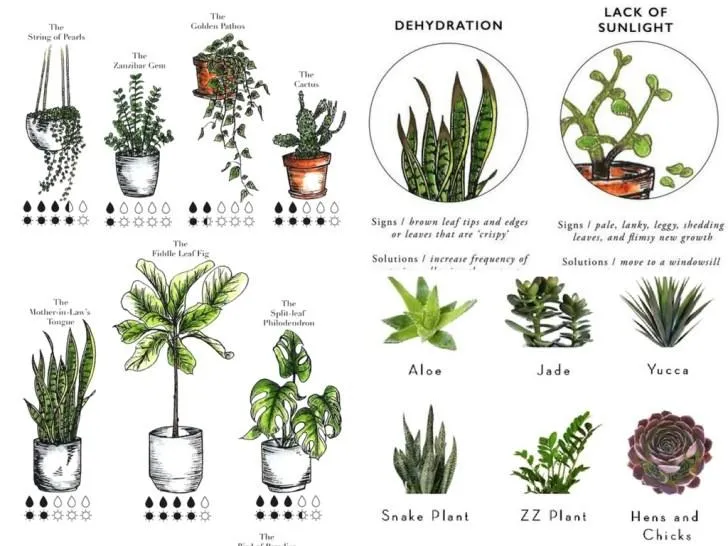Everything You Need to Know About Growing Easy Indoor Plants
If you’re looking for some fresh green companions to liven up your indoor space but don’t have a green thumb, easy indoor plants are the perfect solution. With just a small amount of care, you can enjoy the beauty and benefits of houseplants without a lot of fuss. In this article, I’ll cover all the basics of growing low-maintenance plants inside, from ideal species to care tips to help you succeed.
Top Choices for Low-Effort Indoor Gardening
When it comes to plants that practically take care of themselves, these are some of the best options to consider:
- Pothos – Along with spider plants, pothos is about as low-maintenance as plants get. It thrives in low light and forgives occasional watering neglect. Just give it bright, indirect light and let the soil dry slightly between waterings.
- Snake plant – With tallgrass-like leaves in stripes or speckled patterns, snake plants are nearly impossible to kill. They can go months without water and handle very low light. Just water when the soil is dry.
- Chinese evergreen – These colorful-leafed beauties add vibrant tropical flair while requiring minimal upkeep. Keep soil slightly moist and provide moderate light. Prune occasionally to maintain shape.
- Peace lily – Known for its delicate white blooms, peace lilies flourish in low to medium light. They’ll let you know when they need a drink by dropping their leaves.
Any of these species would make a great starting point for carefree indoor gardening. Their forgiving natures help ease nervous new plant parents into the hobby.
Tips for Simple Plant Care
While low-maintenance plants are naturally hardier, a few basic techniques can help make them virtually foolproof:
- Water only when the top inch or so of soil is dry. For many types, this may be every 7-10 days, less in winter. Overwatering is worse than underwatering.
- Place in a spot with indirect, bright light. Most houseplants thrive next to east or west-facing windows without direct sunlight, which can scorch leaves.
- Check periodically for pests and remove any affected leaves or stems right away before they spread. Mealybugs are a common indoor bug.
- Replace potting soil every 1-2 years for best growth. Well-draining, organic soil keeps roots healthy.
- Prune or repot into a larger container when roots emerge from the drainage holes, usually every 2-3 years.
With a bit of daylight, occasional water, and basic hygiene, you can enjoy bountiful greenery with very little maintenance. Over time, caring for low-effort plants becomes second nature.

Common Problems and How to Prevent Them
Despite their laidback natures, indoor plants may face occasional issues. Here are some potential problems and how to nip them in the bud:
Overwatering
The number one killer of houseplants is giving them too much TLC in the form of water. The key is letting the soil dry out between waterings, even for plants that prefer moist soil. It’s better to underwater than over water. Feel the soil before watering and remove drainage plates to allow excess moisture to evaporate.
Underwatering
On the other side of the spectrum, some plants wilt from lack of H2O. Make sure pots have drainage holes and use a moisture meter to double check if soil is too dry. Water thoroughly when needed to rehydrate soil.
Pests
Check new plants for pests before introducing them inside. Isolate any with issues until treatment. Regular inspections let you spot and eliminate mealybugs, spider mites and other unwelcome visitors before they spread.
Environmental Factors
Provide appropriate light and temperature conditions for the species. Moving or reorienting plants periodically ensures even growth. Too much direct sun or sudden drafts, heat vents or cold windows can cause leaf drop or discoloration.

With a little care paid to water, light, pests and placement, it’s easy to foster thriving houseplants that are as low-demanding on you as they are naturally hardy. Don’t stress the small stuff – relaxed plant parenting is the way to go.
Deriving Benefits from Indoor Greenery
While easy plants may not demand much effort, they most definitely provide rewards. Sharing your space with houseplants has incredible psychological and environmental upsides:
- Cleaner indoor air – Plants absorb toxins like benzene and formaldehyde that off-gas from materials, and release oxygen. Say hi to your personal air purifier!
- Reduced stress – Simply gazing at green leafy companions has been shown to lower blood pressure, heart rate and anxiety levels. It’s a nice nature fix.
- Brighter mood – Houseplants are visually pleasing and add warmth and color to surroundings. Their presence uplifts spirits and combats winter blues.
- Humidity boost – Leafy plants increase humidity in dry winter air by transpiring water vapor. This prevents static shocks and soothes sinuses and skin.
With all the mental, physical and environmental perks houseplants provide, growing easy ones amounts to low-effort self-care. You simply must try it – what have you got to lose but a little dust? Your wellness will thank you.
In summary, easy-care indoor plants are the perfect entry point into the rewarding world of interior gardening. Whether you opt for nearly unkillable pothos, statuesque snake plants or colorful Chinese evergreens, these species practically care for themselves. With the right growing conditions and a little TLC, anyone can nurture thriving greenery with very minimal green thumb ability required. Overall, sharing your space with low-maintenance houseplants amounts to easy beauty, cleaner air and reduced stress – sounds like a totally chill win-win basic-ally. Why not give it a try and see what amazing benefits simple plant life brings indoors? You might be stun-ningly glad you did.
Top Houseplants for Beginners
| Plant | Light Needs | Water Needs | Care Level | Height |
|---|---|---|---|---|
| Pothos | Low | Let soil dry out between waterings | Easy | Up to 6 feet when trailing |
| Snake plant | Low | Let soil dry out completely | Very easy | 1-4 feet |
| Spider plant | Low to bright indirect | Let soil dry out slightly | Easy | 1-2 feet |
| ZZ plant | Low to bright indirect | Let soil dry out between waterings | Very easy | 1-4 feet |
| Peace lily | Bright indirect | Let soil dry out slightly | Easy | 1-3 feet |
FAQ
-
What are some simple plants that don’t need much care?
Basically, peace lilies and pothos are two easy plants to grow inside. Peace lilies enjoy low light and their leaves will wilt when they need water, so they’re kind of foolproof. Pothos vines don’t mind being neglected for a little while, so they’re quite forgiving plants.

-
Do I need a green thumb to keep houseplants alive?
Not really! Lots of common houseplants are incredibly easy to look after. Perhaps you just need to water them every now and then. On top of that, many plants will let you know if they need a drink by drooping their leaves. So even if you kill every other plant, peace lilies and pothos are very hard to mess up!
-
What types of conditions do most houseplants prefer?
Most houseplants do best in medium to low light. Bright, indirect sunlight is alright for many types. They also enjoy warm, humid conditions. However, some tougher plants like succulents will tolerate dim indoor lighting. When watering, moisten the soil but do not soak it. Allow top soil to dry out between waterings.
-
Should I repot my plants regularly?
It depends on the plant! Some only need repotting every few years. But signs that a plant may need a larger pot include having roots emerge from drainage holes. Another hint is if the roots are crowded when removing it from the current pot. Repotting in spring is best so the plant has time to establish before winter. Maybe repot annually for very active growers.
-
Do most houseplants need fertilizer?
Many houseplants can go for a year or more without fertilizer. But if actively growing certain varieties, a diluted liquid fertilizer applied during the spring and summer helps promote healthy growth. Check packaging for application instructions. Fertilizing every few months is sufficient. Feeding plants year-round could lead to problems though.
-
How do I know if a plant needs more or less water?
The number one cause of houseplant death is overwatering, believe it or not! Feel the soil before watering. If the top inch is dry, it’s ready. Leaves also droop when thirsty. Yellowingfoliage or mushy brown roots mean too much water. Does your plant look sickly? Maybe hold off on the watering! Checking soil moisture regularly is key to keeping plants happy.

